What is a Water Purifier?
A water purifier is a water filtration device that differs from other crude filtration systems like water jugs, tanks, or cups as it produces absolutely pure water that can be consumed directly without further heat treatment.
What is a Water Purifier?
Why Use a Water Purifier?
The process of industrialization and modernization has brought about significant changes to the environment, particularly our water sources. Both groundwater and surface water are increasingly affected by severe pollution. Water pollution not only causes aesthetic issues but also negatively impacts the development of many life forms on Earth, including humans. Hence, using a water purifier in our daily lives is essential for maintaining good health.
The Current State of Drinking Water
Tap Water:
– Excess chlorine in water can lead to various health issues and cause an unpleasant odor.
– Water may have high hardness (lime scale) that can settle in the body, potentially causing kidney stones and other health problems.
– It could contain unsafe levels of heavy metals or arsenic.
Well Water:
– High levels of iron and manganese can result in a yellow color and a putrid taste, affecting daily activities.
– Arsenic pollution is present in most groundwater sources in the northern provinces.
– Suspended and dissolved solids are commonly found in well water.
– Well water may contain harmful levels of heavy metals, leading to serious illnesses.
– Bacteria in well water can cause gastrointestinal diseases.
So, do we still need a water purifier if we boil the water before consumption? Boiling water is a common method of water treatment in Vietnam. However, boiling only kills a portion of bacteria and does not remove chemicals, heavy metals, or acidic properties from the water.
Without a water purifier, the water may still contain disease-causing bacteria, chemicals, and heavy metals. Prolonged consumption of contaminated water can adversely affect one’s health, leading to diarrhea, poisoning, skin diseases, and disorders of the liver, kidneys, and blood, as well as cancer.
Benefits of Using a Water Purifier:
– It completely removes harmful substances and impurities, providing the purest water possible.
– It eliminates unpleasant odors and tastes from the water.
– It adds essential minerals beneficial to human health, such as potassium, magnesium, and calcium.
– It saves money by eliminating the need to purchase bottled water for drinking at home.
– It caters to all daily household activities, from drinking and cooking to other domestic uses.
RO or Nano Technology: Which is Better?
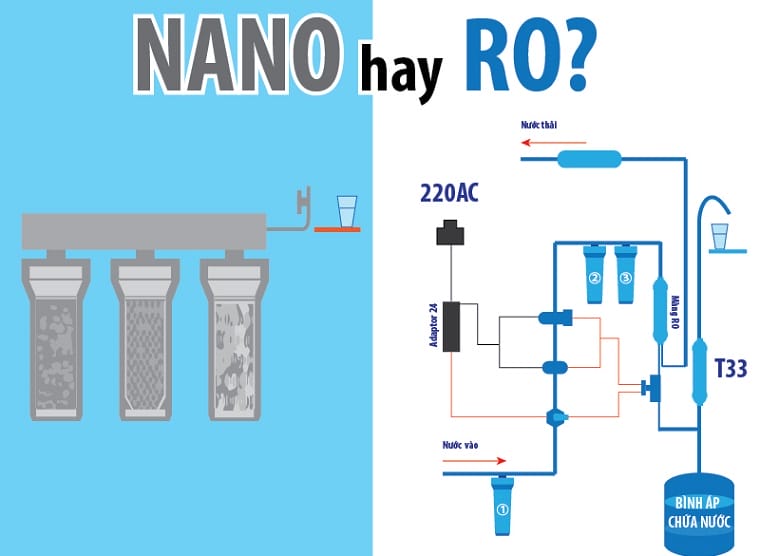
Based on the analysis above, it is clear that Nano water purifiers offer higher-quality filtration. However, they are relatively expensive and require a clean source of water, which may not be feasible in Vietnam.
-
RO Filtration Technology
RO (Reverse Osmosis) filtration technology was introduced in 1870 and utilizes RO membranes to remove bacteria, impurities, heavy metals, and chemicals from water. RO purifiers produce completely pure water by employing the principle of reverse osmosis.
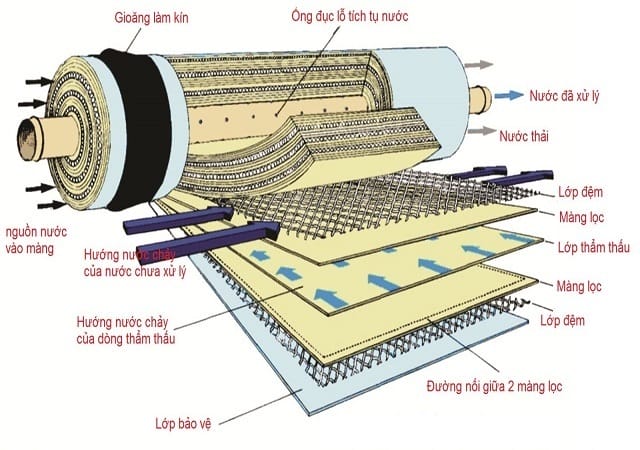
The RO membrane consists of tiny pores measuring only about 1/10,000 the width of a human hair (0.001 micrometers). It allows only water molecules to pass through while blocking 99.99% of other substances (including beneficial and harmful ones). Therefore, RO technology using this membrane produces water that is absolutely pure (containing nothing but water) and devoid of any minerals.
-
Nano Filtration Technology
Nano technology, first introduced in Russia in the early 21st century, is one of the most advanced water filtration methods today. Unlike RO, Nano uses membranes with larger openings, ranging from 0.01 to 0.001 micrometers.
Nevertheless, Nano membranes are capable of removing all bacteria and harmful substances from the water while retaining natural minerals beneficial to health. This is the most significant advantage of Nano filtration technology compared to RO.
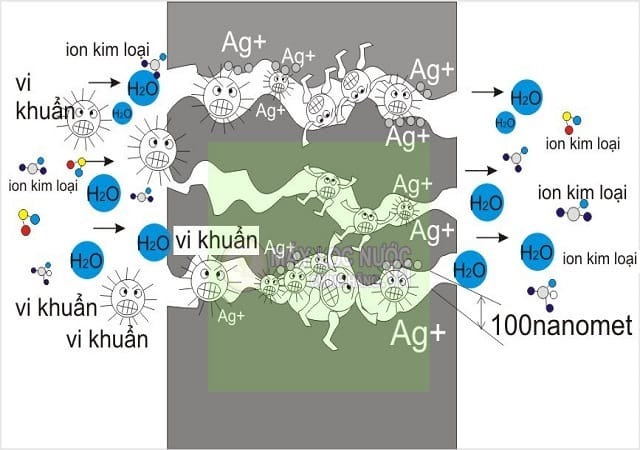
-
Electrolysis Water Filtration Technology
Electrolysis water filtration is an optimal solution for creating clean and healthy water. Currently, most high-quality Japanese water purifiers employ this advanced technology. It is the newest filtration technology available today. Electrolysis is used in ionized alkaline water machines, also known as electrolysis machines, electrolysis water purifiers, Pi water machines, or Kangen water (restorative water) machines. Electrolysis water filtration is considered a brilliant invention by Japanese scientists, marking a significant advancement in the water purification industry.
Electrolysis machines operate based on the principle of electrolysis, separating water molecules into H+ and OH- ions. After filtration, the water is clean and safe for drinking, with up to 99.999% of bacteria and impurities removed.
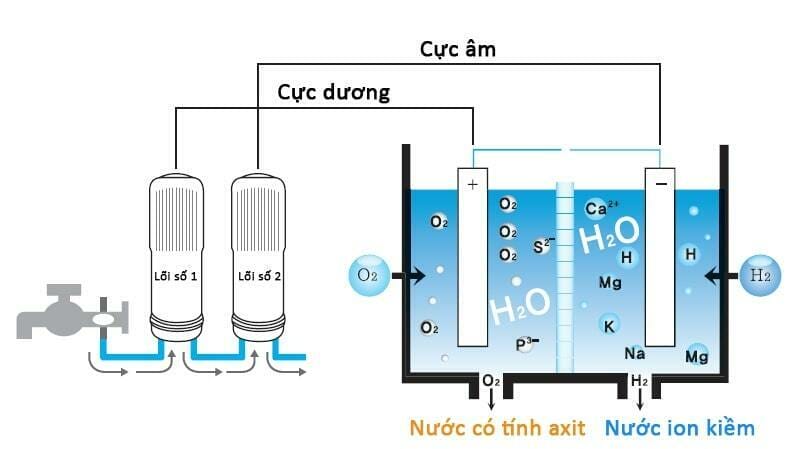
The resulting water exhibits superior qualities, including a natural alkaline property like green vegetables, which helps balance the body’s acid-alkaline levels; a high content of powerful antioxidants (hydrogen) that eliminate harmful free radicals; a rich supply of essential micro-minerals such as Na, K, Ca, Mg, and K; and a super-small molecular structure.
In 1965, Japan’s Ministry of Health issued a Pharmaceutical Notice recognizing the benefits of this type of water and encouraging its use. Experts and doctors from over 180 countries worldwide, including the United States, Japan, Malaysia, Singapore, and South Korea, recommend its consumption.
With this detailed classification, I hope you now understand these three types of water purifiers better. Based on our experience in purchasing and using water purifiers, we will provide you with some considerations for choosing the right water purifier for your family.
Criteria for Choosing a Water Purifier
As mentioned, selecting the right water purifier is crucial for your health. Choosing the best water purifier ensures the highest quality of the output water.
Criterion 1: Filtration Technology Suitable for the Source Water
Depending on the cleanliness of the source water, consumers can choose different types of filtration membranes. RO, Nano, UF, and MF technologies differ mainly in the size of their membrane pores. Smaller pore sizes result in purer water.
RO membranes are versatile and can be used with various water sources, especially contaminated ones. In contrast, Nano and RO water purifiers require cleaner source water to prevent membrane clogging.
Criterion 2: Post-Filtration Water Quality Meets Direct Drinking Standards
In Vietnam, the national standard for direct drinking water is QCVN6-1:2010/BYT, established by the Institute of Occupational and Environmental Health (IOEH). This standard applies to all types of water, including bottled water. The highest standard for assessing the quality of a household water purifier is whether the post-filtration water meets the criteria for direct drinking.
Criterion 3: Number of Filter Cartridges
To ensure water quality, a water purifier should have a minimum of five filter cartridges, regardless of whether it uses RO or Nano technology, as described above.
However, if you have the means and want additional functions like immune system enhancement, detoxification, hydration, or mineral supplementation, you can opt for water purifiers with 6-9 filter cartridges. In our opinion, though, this may not provide significantly more benefits and could lead to unnecessary expenses.
Additionally, consider the cost of periodic filter cartridge replacement. Over time, the filter cartridges become saturated with impurities, affecting the purifier’s performance. Therefore, timely replacement is necessary to maintain the purifier’s effectiveness. Typically, the cost of cartridges from the fourth stage onwards is higher than the first three stages.
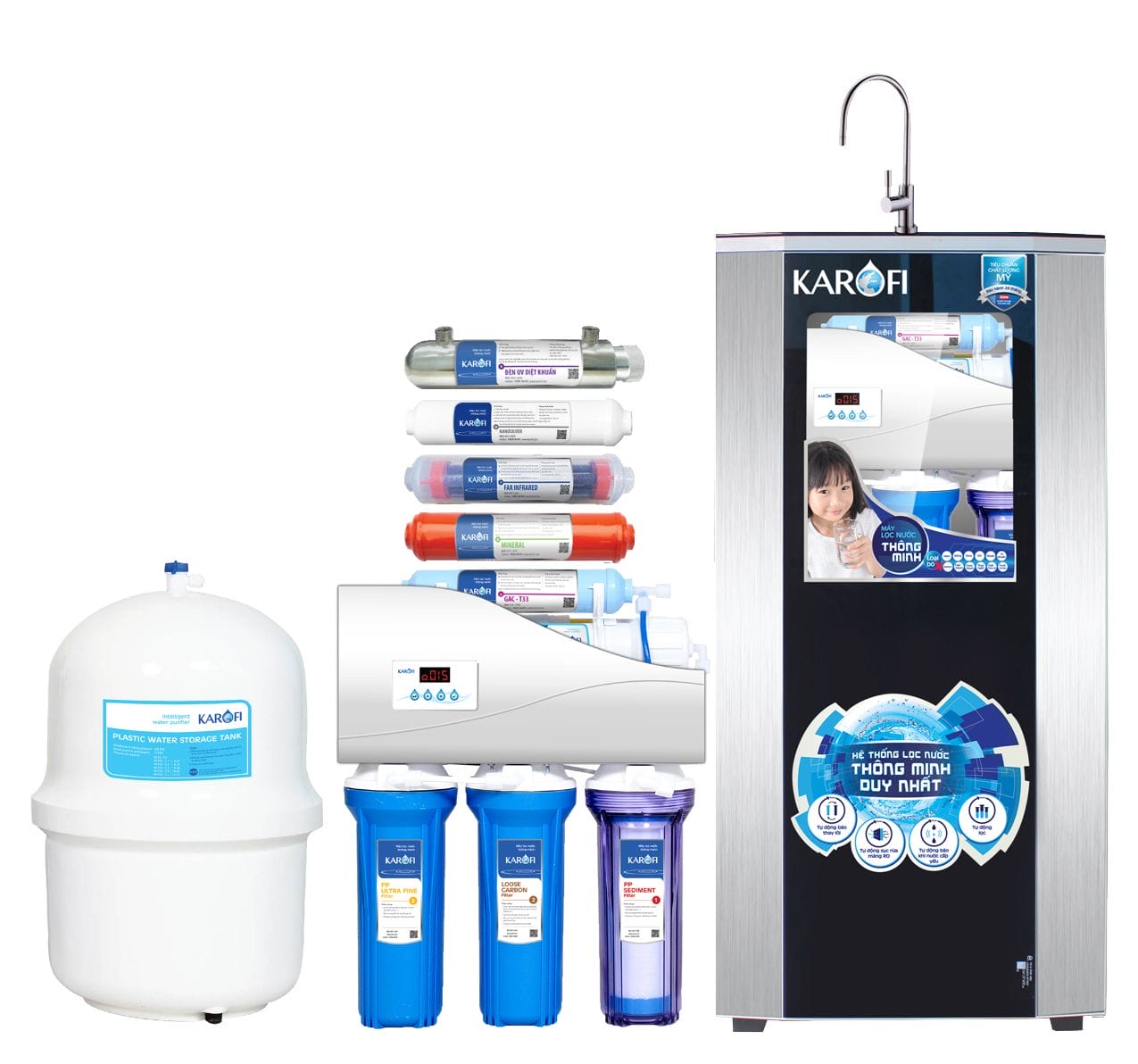
Criterion 4: Origin and Brand
According to Google Vietnam, the search query “Which water purifier brand is the best?” receives over 200 monthly searches, reflecting many consumers’ concerns. The market offers more than 200 water purifier brands, and many products are of questionable quality, unclear origin, or counterfeits of well-known brands. Therefore, to choose the best product, consumers should look for clear origin and brand information or purchase from reputable and reliable sources.
Criterion 5: Design and Style
Today’s water purifiers have similar designs, typically featuring rectangular tanks with a water outlet tap on top. However, they can be categorized into two design types based on their appearance: exposed cartridge design and external casing design. The choice depends on aesthetics and the intended placement of the purifier.
- Exposed cartridge designs are suitable for less noticeable locations, such as under the kitchen sink.
- External casing designs, often made of high-quality stainless steel, enhance the aesthetics of the space and are ideal for areas with high foot traffic, such as the kitchen or living room.
Water purifiers with external stainless steel casings tend to be more expensive than those with exposed cartridges.
Criterion 6: Capacity and Power
As you may know, capacity and power are closely related. For a family of 5-7 members, a purifier with a capacity of 10-15 liters per hour is sufficient for basic needs like cooking, drinking, and bathing infants. Purifiers with higher capacities are typically industrial machines used in factories, businesses, schools, or institutions.
A crucial note: Choosing a purifier with excessive capacity when the demand is low leads to unnecessary energy consumption. Conversely, selecting a purifier with insufficient power for the demand is also impractical.
Criterion 7: Price of Water Purifiers
The price is a primary consideration for consumers when choosing a water purifier. Different types of purifiers have different price ranges. For example, the cost of RO and Nano household water purifiers can vary from 3.5 to 9 million VND.
Premium brands and imported products, such as AO Smith and Coway, can cost up to 17 million VND. Notably, electrolysis water purifiers are the most expensive segment, ranging from 25 to 100 million VND, as they offer superior health benefits. Consider your budget and needs carefully before making a purchase.
Criterion 8: Warranty and Customer Care
Reputable water purifier brands typically offer good warranty policies. If the device malfunctions, customers can contact the customer care center for timely assistance. The warranty period usually ranges from six months to three years, depending on the brand.
To ensure the best performance and output water quality, regular maintenance and timely replacement of filter cartridges are essential. The stability and efficiency of a water purifier largely depend on the condition of its filter cartridges. Many people invest in what they believe to be the best RO water purifier but neglect the importance of periodic cartridge replacement.
Criterion 9: Price
Water purifiers are available in a wide range of prices, typically from 2 to 10 million VND. We have categorized them into three price ranges to facilitate your selection process.
- 2-4 million VND: At this price, you will get a basic water purifier with essential functions and a plain design. Do not expect too much from this price range.
- 4-10 million VND: Products in this range offer more advanced features and aesthetically pleasing designs.
- Above 10 million VND: Purifiers in this premium segment boast elegant designs and numerous features not found in lower-priced models.
Top 5 Household Water Purifiers
With the increasing severity of water pollution, water purifier companies continuously launch new products with improved technology, performance, and features. As a result, consumers face challenges in choosing the most suitable and safe water purifier for their families.
To address this issue, we present the Top 5 household water purifier brands, as evaluated by leading experts.
Aosmith Water Purifier from the USA
Aosmith water purifiers are the best on the market, produced by the American company A.O. Smith with a 140-year history. The brand has a global presence in over 60 countries, including demanding markets like Europe.
Like other water purifiers, Aosmith products use reverse osmosis technology to create pure water and offer additional features like hot and cold water dispensers and timely notifications for cartridge replacement.
Uniquely, Aosmith water purifiers are equipped with Side Stream RO membranes, a technology exclusive to the brand. This technology modifies the membrane structure, adjusts the flow rate on the membrane surface, reduces membrane fouling, increases pure water recovery, minimizes water waste, extends membrane life, and reduces the frequency of cartridge replacement, resulting in cost savings for consumers.
The Side Stream RO membrane increases pure water production by 60%, reduces water waste by 56% during the filtration process, removes 99.99% of bacteria and heavy metals, lowers bacterial counts by over 4000 times, and decreases the risk of viral infections by 400 times. Additionally, Aosmith water purifiers feature automatic shutdown and leak detection functions for added safety.
Aosmith Water Purifier from the USA
Karofi Water Purifier
When it comes to the best water purifier brand, Karofi is a notable name. Karofi water purifiers are manufactured by Karofi Vietnam Joint Stock Company and use RO membranes imported from Dow Chemicals, a leading American company. These RO membranes effectively remove bacteria and impurities from the water. Combined with other filter cartridges, such as T33-GAC, mineral stone, and Nano Silver, Karofi water purifiers eliminate all disease-causing bacteria, providing sweet and natural water rich in essential minerals.
Therefore, experts recommend Karofi water purifiers to ensure the health and well-being of Vietnamese families. Notably, Karofi is the first Vietnamese brand to obtain the QCVN6-1:2010/BYT certification from the Ministry of Health,
































